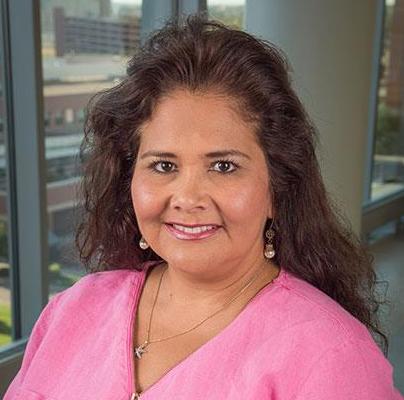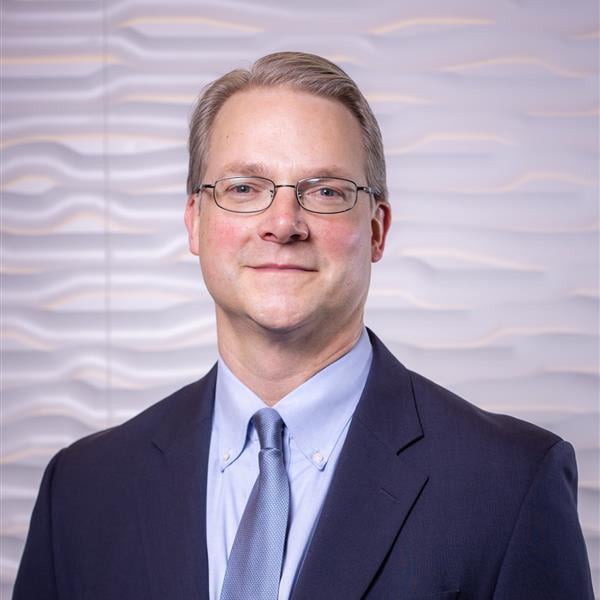Whether they are focused on middle school and high school students, college undergraduates, or current medical students, pipeline programs at the University of Colorado Cancer Center are designed to expose students of all ages and backgrounds to the world of cancer science and research, with a special focus on giving students from underrepresented backgrounds the opportunity to see themselves working in the field.
“My interest has always been to provide opportunities for people to see all the options out there in terms of medical careers, especially academic medical careers,” says Adela Cota-Gomez, MD, assistant director of the cancer center’s Cancer Research Training and Education Coordination (CRTEC) program, which trains mentees across a broad spectrum of educational stages, including middle school and high school students, undergraduates, post-baccalaureates, graduate students, medical students, residents, and fellows. The program brings students to campus on a regular basis to meet with researchers and learn more about what the medical profession entails.
“When young people say, ‘I’m going to be a doctor,’ they’re usually only thinking about being in an office or hospital treating patients,” Cota-Gomez continues. “I was one of those kids, and it wasn’t until I got to college that I realized there were so many research options. There’s an entire world of possibilities within medicine.”
Recruitment and support
The pipeline programs are just one way in which the CU Cancer Center is working to build a diverse and equitable workforce, an effort that also includes recruiting fellows from diverse backgrounds, ensuring a positive experience for residents and interns, creating opportunities to recognize faculty members for their work, and providing mentorship and mental health support for trainees, says Wells Messersmith, MD, associate director of clinical services.
|
Learn about how the CU Cancer Center is helping in each of the eight goals of the National Cancer Institute’s National Cancer Plan aimed at changing how we know cancer today. |
“Each step of the way, from middle school onward, we’re trying to create a vigorous pipeline of talent coming into the field that we can recruit from so that we can have as diverse a workforce as we can,” he says.
Part of a national movement
It’s not just the CU Cancer Center that recognizes the importance of building a diverse workforce; it’s a goal the cancer world as a whole is working toward. In fact, the National Cancer Institute (NCI) included optimizing the workforce as one of eight goals in its National Cancer Plan. Recently unveiled, the plan outlines goals designed to support the aims of President Joe Biden’s Cancer Moonshot initiative, which proposes to reduce cancer deaths in the U.S. by 50% over the next 25 years.
“Developing and maintaining a robust, stable, and diverse biomedical workforce requires collaboration and investment across many organizations, including research universities, professional societies, philanthropic foundations, private industry, and the federal government to train and support this and the next generation of scientists,” the NCI says on its website.
The organization’s strategies for optimizing the cancer workforce include:
- Engaging a diverse pool of talented trainees and early-career scientists and supporting their pursuit of careers in cancer research.
- Eliminating barriers and facilitating entry for individuals historically excluded from or underrepresented in the cancer workforce.
- Developing initiatives to address gaps and increase the number of and training for cancer researchers from underrepresented and underserved backgrounds.
- Studying and addressing the unique needs and concerns of cancer researchers at all career stages in all disciplines.
- Generating new strategies to support career paths in life sciences and non-research science fields, such as education, health policy, and health journalism.
Messersmith says that all are goals shared by the CU Cancer Center, which recently hired an associate director and deputy associate director of diversity, equity, inclusion, and accessibility to steer all of the cancer center’s DEIA efforts, including optimizing the workforce. It’s a goal that becomes self-fulfilling in a way, he says — the more diversity that exists in the program, the more it’s likely to attract.
“If you have someone in middle school walking through here, you want them to realize that, ‘This is an opportunity for me; I see people who look like me, who may have had the same experiences that I’ve had, from that same background as me, who are successful in this field,’” he says. “We want to make them more comfortable considering that as a possible future.”
A leadership priority
Messersmith says the CU Cancer Center’s efforts to create a diverse and equitable workforce also have been aided by director Richard Schulick, MD, MBA, who has made diversity a cornerstone of his leadership.
“Almost any meeting we’re in, we’re talking about diversity, equity, and inclusion,” Messersmith says. “For our faculty, our staff, and also patients — making sure that patients feel comfortable and welcomed and are getting great care no matter what their background is.
“The hope is that you create this core value across the institution and then it just ripples out, all the way from the labs to the clinic to the classroom.”





.png)